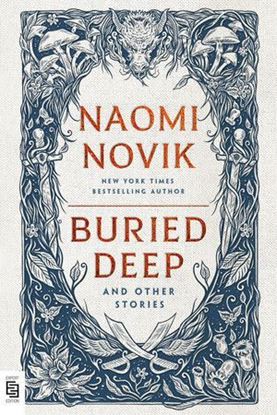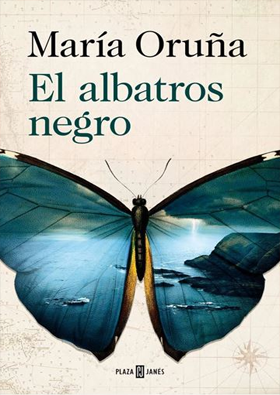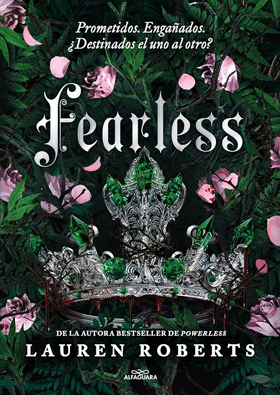

THE NIGHT LAND, ABRIDGED EDITION
In the far future, humankind’s survivors huddle below Earth’s frozen surface in a pyramidal fortress-city that, for centuries now, has been under siege by loathsome “Ab-humans,” enormous slugs and spiders, and malevolent “Watching Things” from another dimension. When our unnamed protagonist receives a telepathic distress signal from a woman whom (in a previous incarnation) he’d once loved, he sallies forth on an ill-advised rescue mission—into the fiend-haunted Night Land!
1,300
THE DAILY DAD
“Life is short. Do not forget about the most important things in our life, living for other people and doing good for them.”—Marcus Aurelius
Becoming a parent is more than just a biological process – it’s a lifelong commitment to sacrifice, service, and most importantly, love. It’s a challenge to get up every day and put your kids first. You will experience moments of heroic compassion and humiliating failure, sometimes within the same day.
But you don’t have to do it alone. From Ryan Holiday, #1 New York Times bestselling author of the smash hit The Daily Stoic, The Daily Dad provides 366 timeless meditations on parenting in a few manageable paragraphs a day – useful for even the most sleep deprived new parent.
1,300
JAMES (MR EXP)
A brilliant, action-packed reimagining of The Adventures of Huckleberry Finn , both harrowing and ferociously funny, told from the enslaved Jim's point of view.
When the enslaved Jim overhears that he is about to be sold to a man in New Orleans, separated from his wife and daughter forever, he decides to hide on nearby Jackson Island until he can formulate a plan. Meanwhile, Huck Finn has faked his own death to escape his violent father, recently returned to town. As all readers of American literature know, thus begins the dangerous and transcendent journey by raft down the Mississippi River toward the elusive and too-often-unreliable promise of the Free States and beyond.
While many narrative set pieces of The Adventures of Huckleberry Finn remain in place (floods and storms, stumbling across both unexpected death and unexpected treasure in the myriad stopping points along the river’s banks, encountering the scam artists posing as the Duke and Dauphin…), Jim’s agency, intelligence and compassion are shown in a radically new light
1,300
BURIED DEEP AND OTHER STORIES
From the dragon-filled Temeraire series and the gothic magical halls of the Scholomance trilogy, through the realms next door to Spinning Silver and Uprooted, this stunning collection takes us from fairy tale to fantasy, myth to history, and mystery to science fiction as we travel through Naomi Novik’s most beloved stories. Here, among many others, we encounter:
• A mushroom witch who learns that sometimes the worst thing in the Scholomance can be your roommate.
• The start of the Dragon Corps in ancient Rome, after Mark Antony hatches a dragon’s egg and bonds with the hatchling.
• A young bride in the Middle Ages who finds herself gambling with Death for the highest of stakes.
• A delightful reimagining of Pride & Prejudice, in which Elizabeth Bennet captains a Longwing dragon.
• The first glimpse of the world of Abandon, the setting of Novik’s upcoming epic fantasy series—a deserted continent populated only by silent and enigmatic architectural mysteries.
Though the stories are vastly different, there is a unifying theme: wrestling with destiny, and the lengths some will go to find their own and fulfill its promise.
1,300
THE FAVORITES
She might not have a famous name, funding, or her family’s support, but Katarina Shaw has always known that she was destined to become an Olympic skater. When she meets Heath Rocha, a lonely kid stuck in the foster care system, their instant connection makes them a formidable duo on the ice. Clinging to skating—and each other—to escape their turbulent lives, Kat and Heath go from childhood sweethearts to champion ice dancers, captivating the world with their scorching chemistry, rebellious style, and roller-coaster relationship.
Until a shocking incident at the Olympic Games brings their partnership to a sudden end.
As the ten-year anniversary of their final skate approaches, an unauthorized documentary reignites the public obsession with Shaw and Rocha, claiming to uncover the “real story” through interviews with their closest friends and fiercest rivals. Kat wants nothing to do with the documentary, but she can’t stand the thought of someone else defining her legacy. So, after a decade of silence, she’s telling her story: from the childhood tragedies that created her all-consuming bond with Heath to the clash of desires that tore them apart. Sensational rumors have haunted their every step for years, but the truth may be even more shocking than the headlines.
1,300
A DEATH IN CORNWALL
A brutal murder, a missing masterpiece, a mystery only Gabriel Allon can solve . . .
Art restorer and legendary spy Gabriel Allon has slipped quietly into London to attend a reception at the Courtauld Gallery celebrating the return of a stolen self-portrait by Vincent van Gogh. But when an old friend from the Devon and Cornwall Police seeks his help with a baffling murder investigation, he finds himself pursuing a powerful and dangerous new adversary.
The victim is Charlotte Blake, a celebrated professor of art history from Oxford who spends her weekends in the same seaside village where Gabriel once lived under an assumed identity. Her murder appears to be the work of a diabolical serial killer who has been terrorizing the Cornish countryside. But there are a number of telltale inconsistencies, including a missing mobile phone. And then there is the mysterious three-letter cypher she left behind on a notepad in her study.
1,300














